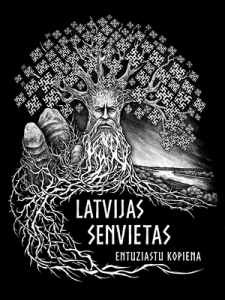Extra materials:
Contains information from the project:

The spring was mentioned already in the documents of the 19th century as a spring with healing power. It is situated in a valley, in a swampy place, on the right bank of the Sulupīte River that flows into the Melnupe River. The depth of the spring is 26 cm. The water is very clear. The bed of the spring is covered with grey coloured sediment. Around the spring rust sediment is forming. A gathering place of parish significance. It is not included in the State Heritage lists.
A tale narrates, “the Sulupīte River flows along the Vizikoki over the hill lowland that used to have turbid water just like juice. A few hundred meters downwards the Vizikoki Brosis homestead, on the right bank of the Sulupīte River, a spring purls called the Eye or Cranium Spring due to its cranium-form. In ancient times they came there to wash ill eyes. Not far from the spring the Sulupīte River joins the Melnupe River.” (Latvian Folk Tales (Latviešu tautas teikas). 1991)
According to Internet sources, it turned out that while walking the overgrown forest and the recreation site, we did not succeed to locate the real place of the spring — it is indicated at the Vizikoki homestead, although the arrival is from the Dišleri side and the Vizikoki homestead is abandoned. In any case it just proves that it is not so easy to reach the spring as it was believed (the majority of people would cross the bridge over the river and would not even search for it further). On the information stand there were tales about the origin of the spring conjured up by children. The spring has a high content of iron (the water that has been in a bottle for a while turns yellow), and the spring itself has a form of a crania.


